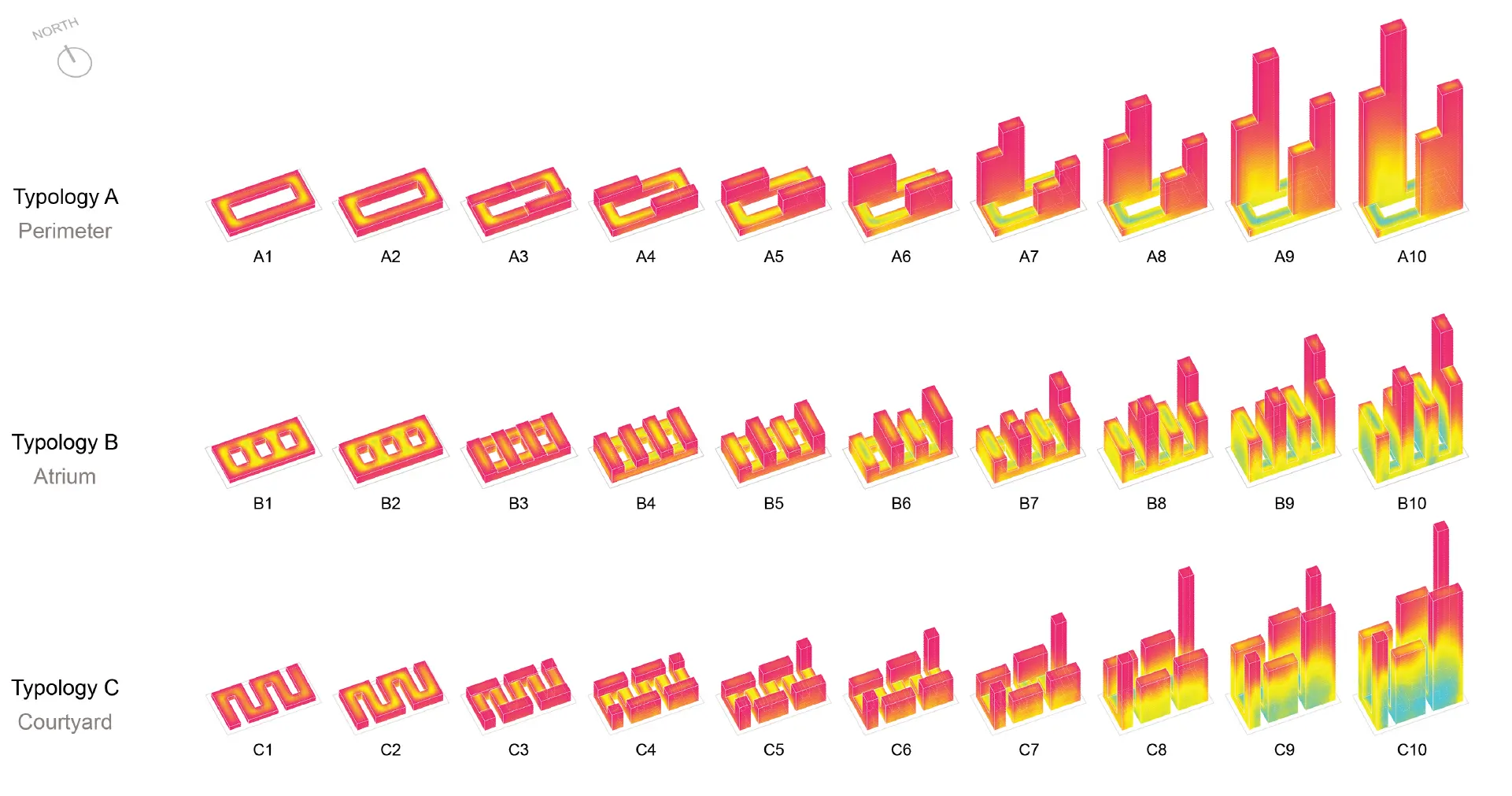Daylight Density
Urbanism
- Team: Manos Saratsis, Timur Dogan, Christoph Reinhart
- Date: 2015
- Link: Read the full paper
Increasing urban density leads to a conflict between space-use efficiency and daylight access. Cities have traditionally relied on zoning guidelines that consist of section-based geometric evaluation techniques and/or hours of access to direct sunlight. However, it is now possible to quantify the performance of detailed design proposals before construction. Annual climate-based daylighting performance metrics for urban environments can be computed accurately, in high spatial resolution and in a timely manner. Given that massing design decisions at the urban planning level may make or break the long-term daylighting potential of a whole neighbourhood, the adoption of these tools by zoning boards, developers and urban planners seems particularly relevant.
A simulation-based daylighting analysis procedure reveals the capabilities for both formulating more nuanced prescriptive zoning rules as well as for use by design teams. The procedure is used to evaluate the daylighting performance of 50 block typologies in New York City (NYC). The analysis demonstrates that certain urban massing approaches (e.g. pencil towers on a contextual base) outperform conventional massing strategies. A second case study application of an actual city block shows that innovative urban massings can improve access to daylight for the massing itself as well as for neighbouring buildings.

